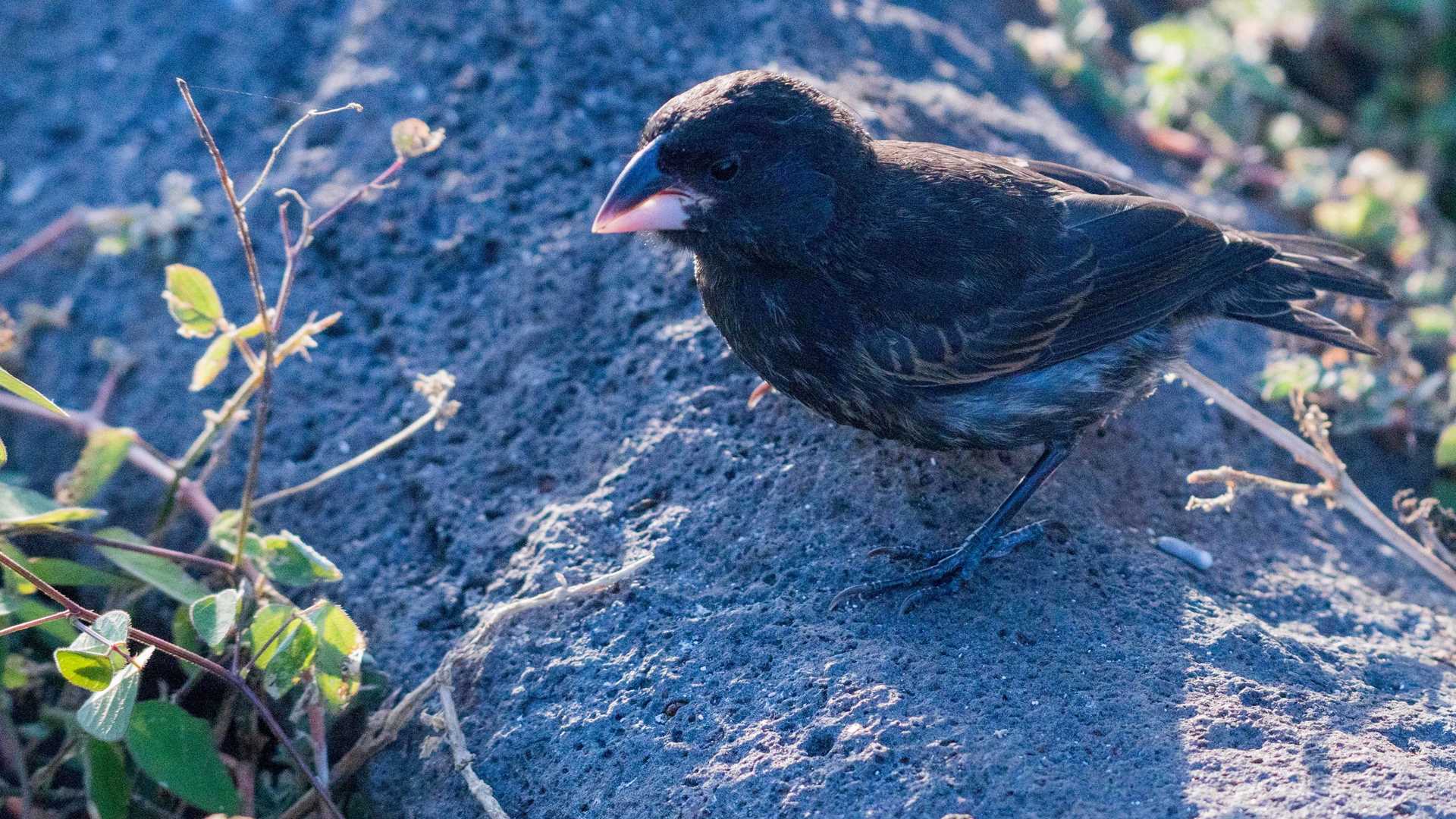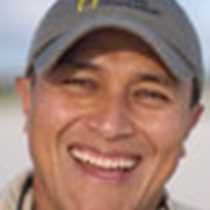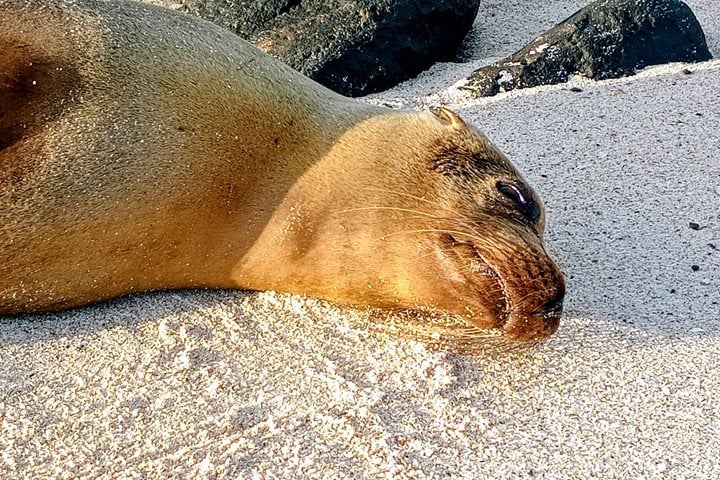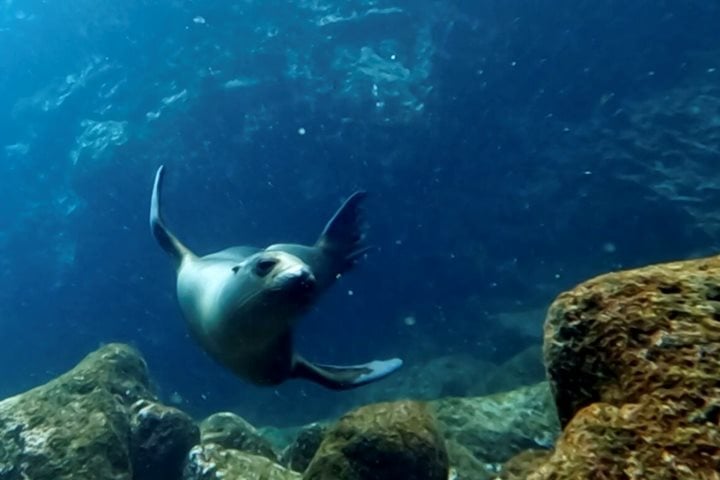We had another full and interesting day in Galapagos! Today we explored the southern island of Española and participated in a wide variety of activities. In the morning we had a stretching session on a lovely white sand beach and were charmed by a sea lion pup who wanted to join in! After breakfast, we had some top-notch snorkeling in the company of colorful fish and friendly sea lions. Later we relaxed and walked the beach and kayaked.
In the afternoon, many of us hiked along a rocky trail that took us through sea lion and sea bird colonies and up to the edge of a dramatic cliff where salt spray was thrown many meters high by the force of waves pounding into a blowhole. The walk was a bit difficult but well worth every lava boulder carefully stepped upon! The wildlife was incredible. We took dozens of photos and we returned to the ship just as the sunset. Alternately, I took a group of guests out by Zodiac and we enjoyed seeing the sea birds in flight, the iguanas on the rocks and sea lions resting on the beach, and several sea turtles floating on the ocean surface.










